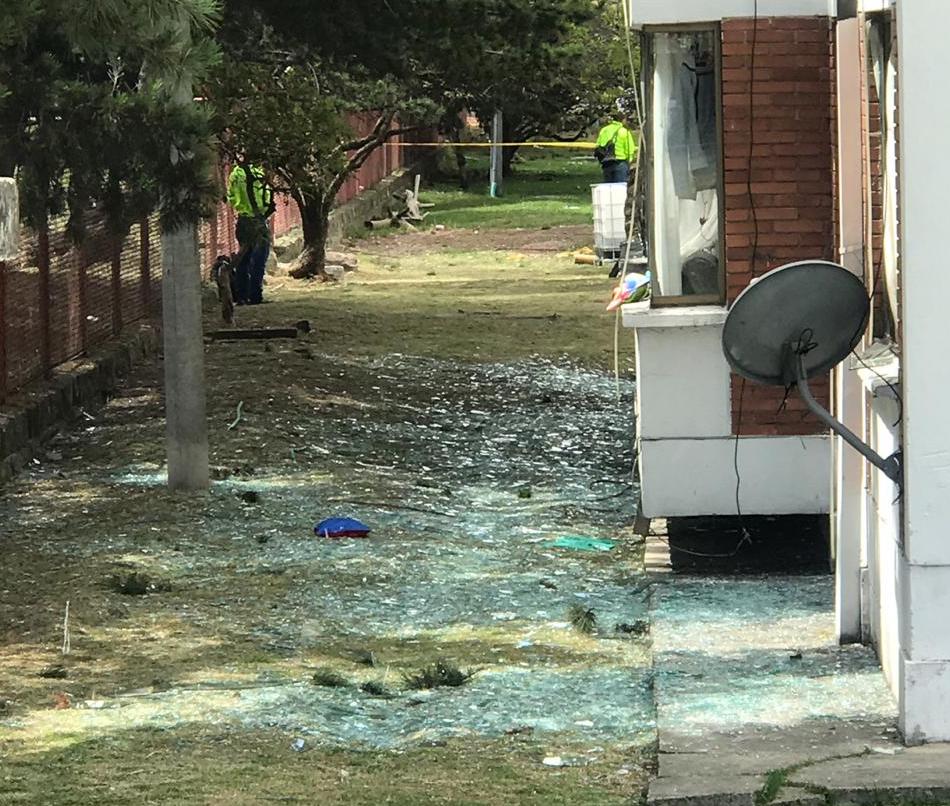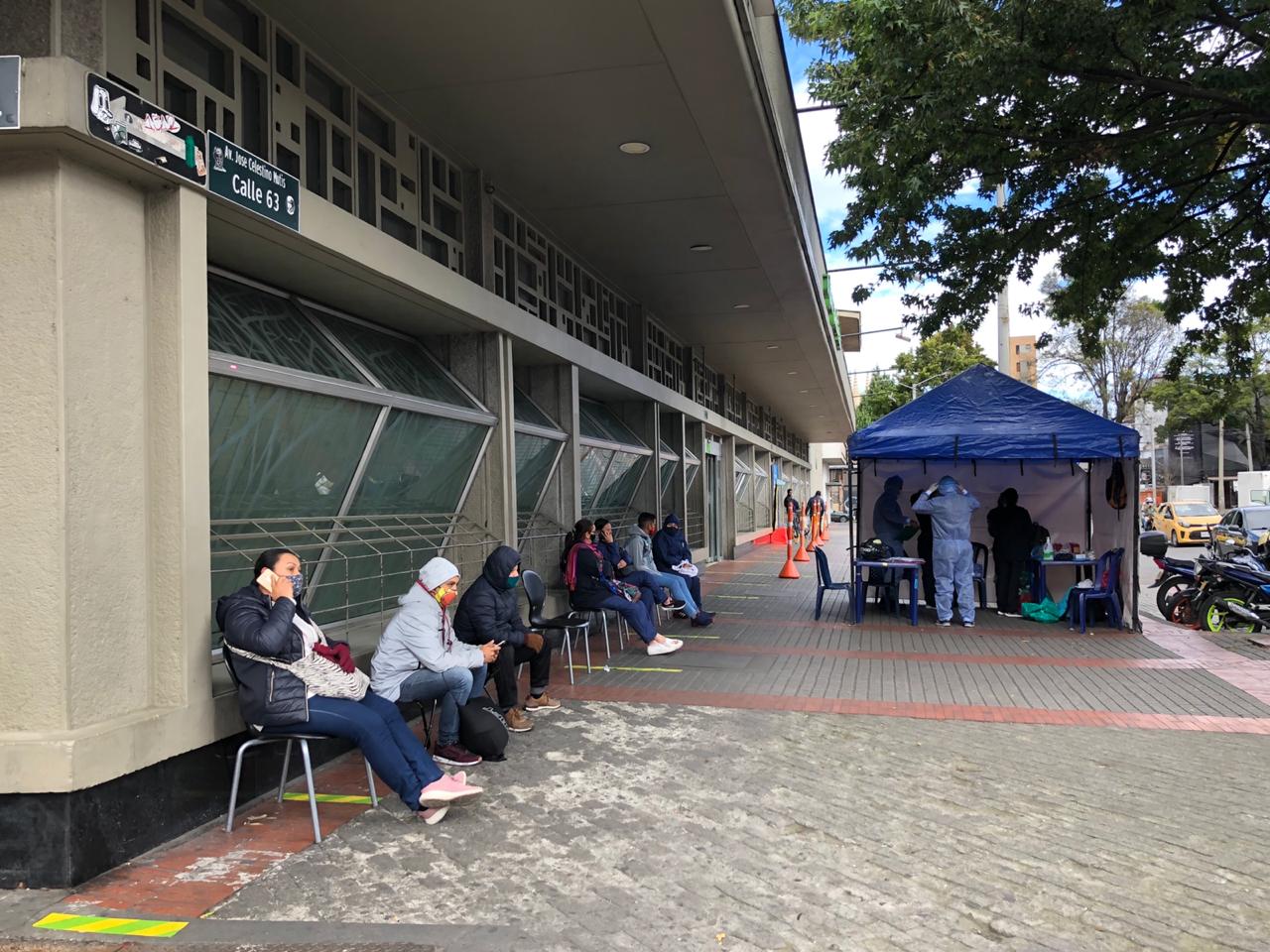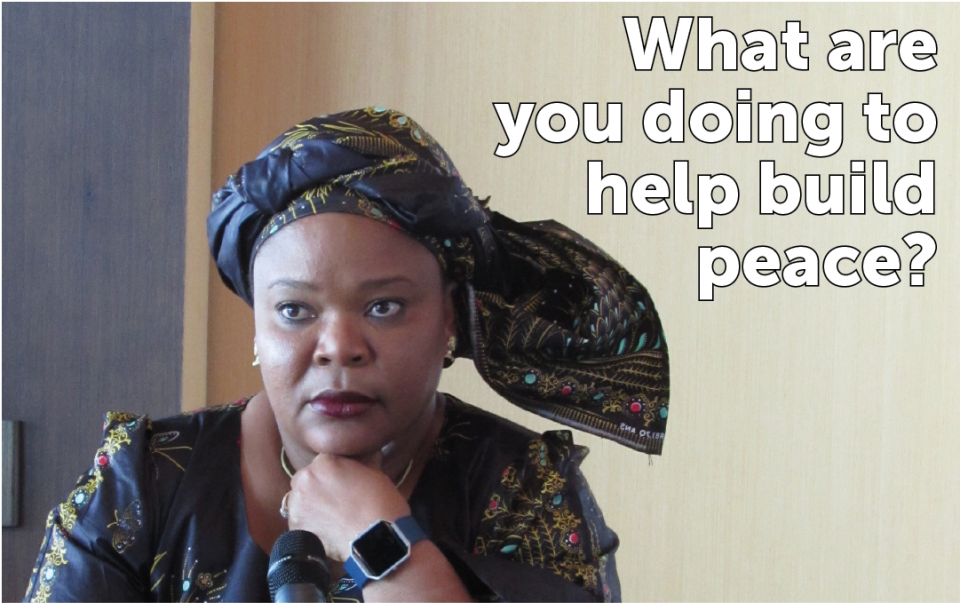
As Colombians reel from the first car bombing in the capital since 2010, the atmosphere in the city is muted. Locals – one of whom condemned the attack as “cowardly” – described their sadness and expressed fears of an escalation in violence.
“It brings back the feeling of insecurity, horror and pain,” said another. “Having this sensation of going back to violence in such enormous magnitude makes me feel very afraid and uncertain about what could happen next.”
A day following the attack many commuters noted the city unusually quiet. “Many folk are staying home today. People are scared,” one commented.
The attack was aimed at the national police training academy, Escuela General Santander, close to a busy main road in the south of the city at 9.30 am Thursday, killing 21 people – mostly young police cadets – and injuring 68 more. Of those nine are still in hospital, two in intensive care. Trainees from neighbouring Ecuador and Panama are among the victims
There will be a vigil for the victims at 9am on Sunday at the Plaza Bolívar, in Bogotá and other locations throughout the country.
So far, authorities have been quick to take action. Two people have already been arrested and the car’s driver – who died in the attack – identified as José Aldemar Rojas Rodríguez, an explosives expert from the guerrilla group ELN
The Colombian minister of defence Guillermo Botero announced today that Rojas, also known as ‘Mocho’ or ‘Kiko’, had been driving a Nissan Patrol car which contained 80 kilos of explosives. The vehicle approached the military school from a rear entrance when it was stopped by a security guard. It then reversed and exploded in front of a dormitory.
Yesterday President Duque offered his condolences to the families and announced that there would be three days of national mourning. He promised that those behind this “despicable act” would not go unpunished. “We will pursue their funding sources, such as drug trafficking, and we will use all available tools to remove the fuel of their criminal acts,” he said.
The ELN have neither claimed nor denied responsibility.
The faltering peace talks with the ELN came to an official halt back in September when the High Commissioner for Peace, Miguel Ceballos, stated that the talks which had started under Santos had run their course.
This year has seen an increase in attacks and kidnappings by the ELN, especially in rural Colombia.
Related: ELN peace talks on a knife edge
And unfortunately, amid the sadness, there is also suspicion. As one person we spoke to put it, “I am worried that this attack could have been orchestrated by the government to distract attention from what is happening with the Fiscal. And I’m worried about the fact that I could even think the government might have done this.”
It is a time of unrest in a historically divided society. Former FARC rebels are frustrated by the government dragging its heels in delivering its side of the peace agreement. The Fiscal / Attorney General is facing increased pressure for his resignation over the accusations that he did not reveal his knowledge of irregularities in the Odebrecht contracts. A seemingly unstoppable rise in the murders of social leaders is connected to spiralling rural violence and a lack of state control.
Set against this backdrop, and against a history of conflict in the country, it is understandable that this attack makes Colombians fearful. Not just about fear, but about a widespread fear that legitimises government violence and sparks and increased cycle of conflict.
About the ELN
After the peace agreement with the FARC, the ELN (National Liberation Army / Ejército de Liberación Nacional) is Colombia’s largest left wing rebel group. Inspired by Marxist ideology and Liberation Theology, they were formed in the 1960s by Fabio Vásquez Castaño along with a group of students, intellectuals and Catholic radicals.
The ELN are known for kidnapping as well as their attacks on state targets, infrastructure, especially oil pipelines. Unlike the FARC, the ELN is a less hierarchical group, which has made negotiations complicated.
In 2017, the ELN was estimated to have between 1,500 and 1,800 members. Since then they’ve been joined by an estimated 1,000 FARC dissidents and become more active in areas vacated by the FARC.





